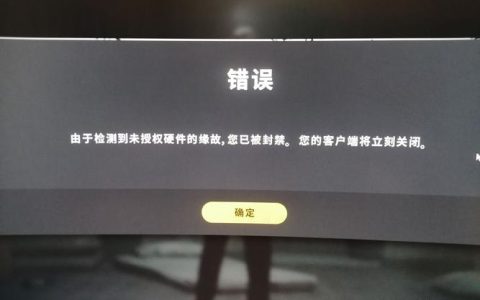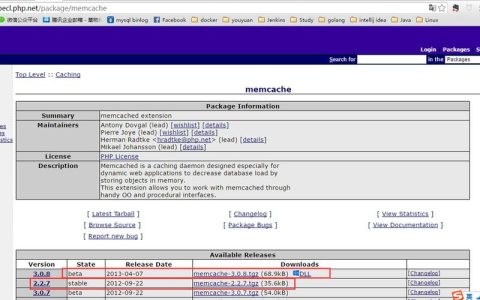在ASP开发中,将数字转换为字母字符是常见的需求,例如处理ASCII码还原、自定义编码映射、生成序列号等场景,实现这一功能的核心在于建立数字与字符的对应关系,并根据具体业务逻辑选择合适的转换方法,本文将详细讲解ASP中数字转字母的多种实现方式、代码逻辑及注意事项。

基于ASCII码的数字转字母
ASCII码(美国信息交换标准代码)是字符编码的标准之一,每个英文字母、数字、符号都对应唯一的整数值,在ASCII表中,大写字母A-Z的编码范围是65-90,小写字母a-z的编码范围是97-122,ASP内置的Chr函数可直接将ASCII码转换为对应字符,实现数字到字母的转换。
示例代码
Function ASCII_to_Letter(num)
' 检查输入是否为数字
If Not IsNumeric(num) Then
ASCII_to_Letter = "输入不是有效数字"
Exit Function
End If
num = CInt(num) ' 转换为整数
' 判断是否为大写字母范围(65-90)
If num >= 65 And num <= 90 Then
ASCII_to_Letter = Chr(num)
' 判断是否为小写字母范围(97-122)
ElseIf num >= 97 And num <= 122 Then
ASCII_to_Letter = Chr(num)
Else
ASCII_to_Letter = "数字超出字母ASCII码范围"
End If
End Function
' 调用示例
Response.Write ASCII_to_Letter(65) ' 输出 A
Response.Write ASCII_to_Letter(97) ' 输出 a
Response.Write ASCII_to_Letter(123) ' 输出 数字超出字母ASCII码范围 ASCII码与字母对应关系表
| 数字(ASCII码) | 字母 | 数字(ASCII码) | 字母 |
|---|---|---|---|
| 65 | A | 97 | a |
| 66 | B | 98 | b |
| 67 | C | 99 | c |
| 68 | D | 100 | d |
| 69 | E | 101 | e |
| 70 | F | 102 | f |
| 71 | G | 103 | g |
| 72 | H | 104 | h |
| 73 | I | 105 | i |
| 74 | J | 106 | j |
| 75 | K | 107 | k |
| 76 | L | 108 | l |
| 77 | M | 109 | m |
| 78 | N | 110 | n |
| 79 | O | 111 | o |
| 80 | P | 112 | p |
| 81 | Q | 113 | q |
| 82 | R | 114 | r |
| 83 | S | 115 | s |
| 84 | T | 116 | t |
| 85 | U | 117 | u |
| 86 | V | 118 | v |
| 87 | W | 119 | w |
| 88 | X | 120 | x |
| 89 | Y | 121 | y |
| 90 | Z | 122 | z |
基于自定义映射的数字转字母
当数字与字母的对应关系并非ASCII标准时(如1=A、2=B…26=Z,或非连续映射),需通过自定义逻辑实现转换,常见方法包括数组映射、字典映射或规则计算。
方法1:数组映射(适用于连续数字)
若数字与字母为连续映射(如1-26对应A-Z),可通过预定义数组实现快速查找。
Function Custom_Array_Letter(num)
Dim letterArray(25) ' 26个字母,索引0-25
letterArray(0) = "A": letterArray(1) = "B": letterArray(2) = "C"
letterArray(3) = "D": letterArray(4) = "E": letterArray(5) = "F"
letterArray(6) = "G": letterArray(7) = "H": letterArray(8) = "I"
letterArray(9) = "J": letterArray(10) = "K": letterArray(11) = "L"
letterArray(12) = "M": letterArray(13) = "N": letterArray(14) = "O"
letterArray(15) = "P": letterArray(16) = "Q": letterArray(17) = "R"
letterArray(18) = "S": letterArray(19) = "T": letterArray(20) = "U"
letterArray(21) = "V": letterArray(22) = "W": letterArray(23) = "X"
letterArray(24) = "Y": letterArray(25) = "Z"
If IsNumeric(num) And num >= 1 And num <= 26 Then
Custom_Array_Letter = letterArray(num-1) ' 数组索引从0开始
Else
Custom_Array_Letter = "数字超出1-26范围"
End If
End Function
' 调用示例
Response.Write Custom_Array_Letter(1) ' 输出 A
Response.Write Custom_Array_Letter(26) ' 输出 Z
Response.Write Custom_Array_Letter(27) ' 输出 数字超出1-26范围 方法2:字典映射(适用于非连续或自定义规则)
若映射关系复杂(如1=A、3=C、5=E,跳过偶数),可通过字典存储键值对,实现灵活查找。

Function Custom_Dict_Letter(num)
Dim dict
Set dict = CreateObject("Scripting.Dictionary")
' 添加自定义映射
dict.Add 1, "A": dict.Add 3, "C": dict.Add 5, "E"
dict.Add 7, "G": dict.Add 9, "I": dict.Add 11, "K"
If dict.Exists(num) Then
Custom_Dict_Letter = dict(num)
Else
Custom_Dict_Letter = "数字无对应映射"
End If
Set dict = Nothing ' 释放对象
End Function
' 调用示例
Response.Write Custom_Dict_Letter(3) ' 输出 C
Response.Write Custom_Dict_Letter(8) ' 输出 数字无对应映射 自定义映射示例表(非连续数字)
| 数字 | 字母 | 数字 | 字母 |
|---|---|---|---|
| 1 | A | 7 | G |
| 3 | C | 9 | I |
| 5 | E | 11 | K |
处理特殊数字与边界情况
实际应用中,输入数字可能存在异常(如负数、0、小数、超出范围等),需通过逻辑增强函数的健壮性。
处理超出范围的数字
若数字大于122(小写z的ASCII码)或小于65(大写A的ASCII码),可采取“循环使用”或“截取取模”策略,数字123可转换为123-26=97(对应”a”),数字64可转换为64+26=90(对应”Z”)。
Function Safe_ASCII_Letter(num)
If Not IsNumeric(num) Then
Safe_ASCII_Letter = "输入不是数字"
Exit Function
End If
num = CInt(num)
' 循环处理:确保数字落在65-90或97-122范围内
Do While num > 122
num = num - 26
Loop
Do While num < 65
num = num + 26
Loop
If (num >= 65 And num <= 90) Or (num >= 97 And num <= 122) Then
Safe_ASCII_Letter = Chr(num)
Else
Safe_ASCII_Letter = "无对应字母"
End If
End Function
' 调用示例
Response.Write Safe_ASCII_Letter(123) ' 输出 a (123-26=97)
Response.Write Safe_ASCII_Letter(64) ' 输出 Z (64+26=90) 处理小数数字
若输入为小数(如65.5),可通过CInt强制取整或Round四舍五入后再转换。
Function Float_to_Letter(num)
If Not IsNumeric(num) Then
Float_to_Letter = "输入不是数字"
Exit Function
End If
num = Round(num) ' 四舍五入取整
If num >= 65 And num <= 90 Then
Float_to_Letter = Chr(num)
ElseIf num >= 97 And num <= 122 Then
Float_to_Letter = Chr(num)
Else
Float_to_Letter = "数字超出字母范围"
End If
End Function
' 调用示例
Response.Write Float_to_Letter(65.5) ' 输出 A (65.5四舍五入为66)
Response.Write Float_to_Letter(97.2) ' 输出 a (97.2四舍五入为97) 代码优化与注意事项
- 输入验证:始终使用
IsNumeric检查输入是否为数字,避免非数字导致运行时错误。 - 性能优化:自定义映射时,字典(
Scripting.Dictionary)查找效率高于数组遍历,适合大量数据场景。 - Unicode支持:若需转换非英文字符(如中文、日文),可使用
ChrW函数处理Unicode码(如ChrW(20013)返回”中”)。 - 可读性:将转换逻辑封装为独立函数,便于复用和维护,避免重复代码。
相关问答FAQs
Q1:ASP中如何将数字1-26对应字母A-Z,并支持超过26的数字(如27对应”AA”)?
A:可采用类似Excel列名的26进制转换逻辑,数字1对应A,26对应Z,27对应AA,以此类推,核心思路是每次用26取模,并处理进位:

Function Number_to_Letter(num)
If Not IsNumeric(num) Or num < 1 Then
Number_to_Letter = ""
Exit Function
End If
Dim result, temp
result = ""
Do While num > 0
temp = (num - 1) Mod 26 ' 减1使范围变为0-25,对应A-Z
result = Chr(65 + temp) & result ' 65是A的ASCII码
num = (num - 1) 26 ' 整除26,处理进位
Loop
Number_to_Letter = result
End Function
' 调用示例
Response.Write Number_to_Letter(1) ' 输出 A
Response.Write Number_to_Letter(26) ' 输出 Z
Response.Write Number_to_Letter(27) ' 输出 AA
Response.Write Number_to_Letter(52) ' 输出 AZ
Response.Write Number_to_Letter(53) ' 输出 BA Q2:如果数字是小数(如65.8),如何强制转换为字母?
A:可通过CInt强制取整(直接截断小数部分)或Round四舍五入,再结合ASCII转换逻辑。
Function Force_Float_Letter(num)
If Not IsNumeric(num) Then
Force_Float_Letter = "输入不是数字"
Exit Function
End If
' 方法1:CInt强制取整(65.8→65)
num = CInt(num)
' 方法2:Round四舍五入(65.8→66),取消注释下面行使用此方法
' num = Round(num)
If num >= 65 And num <= 90 Then
Force_Float_Letter = Chr(num)
ElseIf num >= 97 And num <= 122 Then
Force_Float_Letter = Chr(num)
Else
Force_Float_Letter = "数字超出字母范围"
End If
End Function
' 调用示例
Response.Write Force_Float_Letter(65.8) ' 输出 A (CInt取整65)
' Response.Write Force_Float_Letter(65.8) ' 若使用Round,输出 B (66) 【版权声明】:本站所有内容均来自网络,若无意侵犯到您的权利,请及时与我们联系将尽快删除相关内容!






发表回复